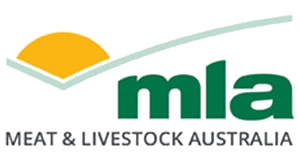Summary
Background
Vacuum packaging of beef and lamb under chilled conditions remains an effective measure for extending the shelf life of such products and for the control of foodborne pathogens.
The low oxygen concentration involved in vacuum-packaging has a selective effect on the microbial population and generally results in the proliferation of lactic acid bacteria - LAB.
Under good processing and packaging conditions, the counts of LAB on the surfaces of primals at the time of packaging are very low, however the numbers of LAB increase during storage and can be expected to reach high levels after 5 to 8 weeks.
The presence of high numbers of LAB may result in the presence of unacceptable odours and meat flavours in products stored for prolonged periods of time.
Purpose and description
The industry relies on the use of vacuum-packaging as a mechanism for extending shelf-life but there has been little recent emphasis on the storage life of vacuum-packaged beef and lamb and the retail life of meat cuts prepared from the vacuum packs.
Consequently current practices are based on data generated up to two decades ago.
Improvements in processing technologies, transport and refrigeration systems, and packaging technologies during that time highlights a need for a review of this area.
The purpose of this project was to investigate the shelf life claims of vacuum-packaged primals.
To investigate sufficiently, there is a requirement to carry out microbiological testing and sensory evaluation of product.
The project also presents an opportunity to generate data suitable for incorporation into a predictive model to assist the entire industry in setting realistic shelf life claims.
The project had two main components:a vacuum packaged beef storage trial in Australiaa vacuum packaged beef storage trial in the USA
Results
Product scored highly for all sensory evaluations up to and beyond 20 weeks of storage.
Between 20 and 30 weeks, there was a gradual decline in scores given for visual appearance, and more marked development of confinement odour.
Microbiologically, counts of total viable count - TVC - and LAB increased slowly over the storage period, and the expected plateau at 3 weeks of storage was not evident.
The mean TVC ranged from:1.53 to 4.07 log10 cfu/cm2 on day zero2.30 to 5.45 log10 cfu/cm2 at week 83.24 to 6.32 log10 cfu/cm2 at week 203.48 to 7.65 log10 cfu/cm2 at week 30
In general, LAB counts mirrored TVC, but the range in mean counts detected was more marked.
On day zero, LAB counts were between -0.46 and 1.69 log10 cfu/cm2, at week 8 between 1.88 and 5.08 log10 cfu/cm2, 1.38 and 6.25 log10 cfu/cm2 at week 20, and 1.43 and 6.63 log10 cfu/cm2 at week 30. More interestingly, there were noticeable differences in the rate of development of the microflora between individual processors.
It appeared that the rate of development of LAB in product from processors A, B and E was faster than in product from processors C, D and F, which compares with the findings in A.MFS.0132 that the development of LAB was faster in product from processors B and E than in product from processors C and D.
In terms of taste evaluation in the later stages of storage, in some product, an aged, cheesy or metallic flavour and aftertaste was noticed, but overall the product was considered acceptable, even at week 30.
The data generated by this project support the findings that vacuum packed primals from Australian export processors can be stored confidently for 26 weeks or more, under appropriate conditions.
Nevertheless, initial microbial load and strict temperature control will remain critical influences on overall product quality.
The results of this research have been presented and published in the following;Conference proceedings
Small, A., Sikes, A. & Jenson, I. (2009). Prolonged storage of chilled vacuum packed beef from Australian export abattoirs. Proc: International Conference on Meat Science and Technology, Copenhagen, August 2009Journal articles
Rodas-Gonzalez, C. Narvaez-Bravo, M.M. Brashears, H.B. Rogers, J.L. Tedford, G.O.Clark, J.C. Books, B.J. Johnson, R.J. Rathmann, M.F. Miller (2011) Evaluation of the storage life of vacuum packaged Australian beef. Meat science 88:128-138


